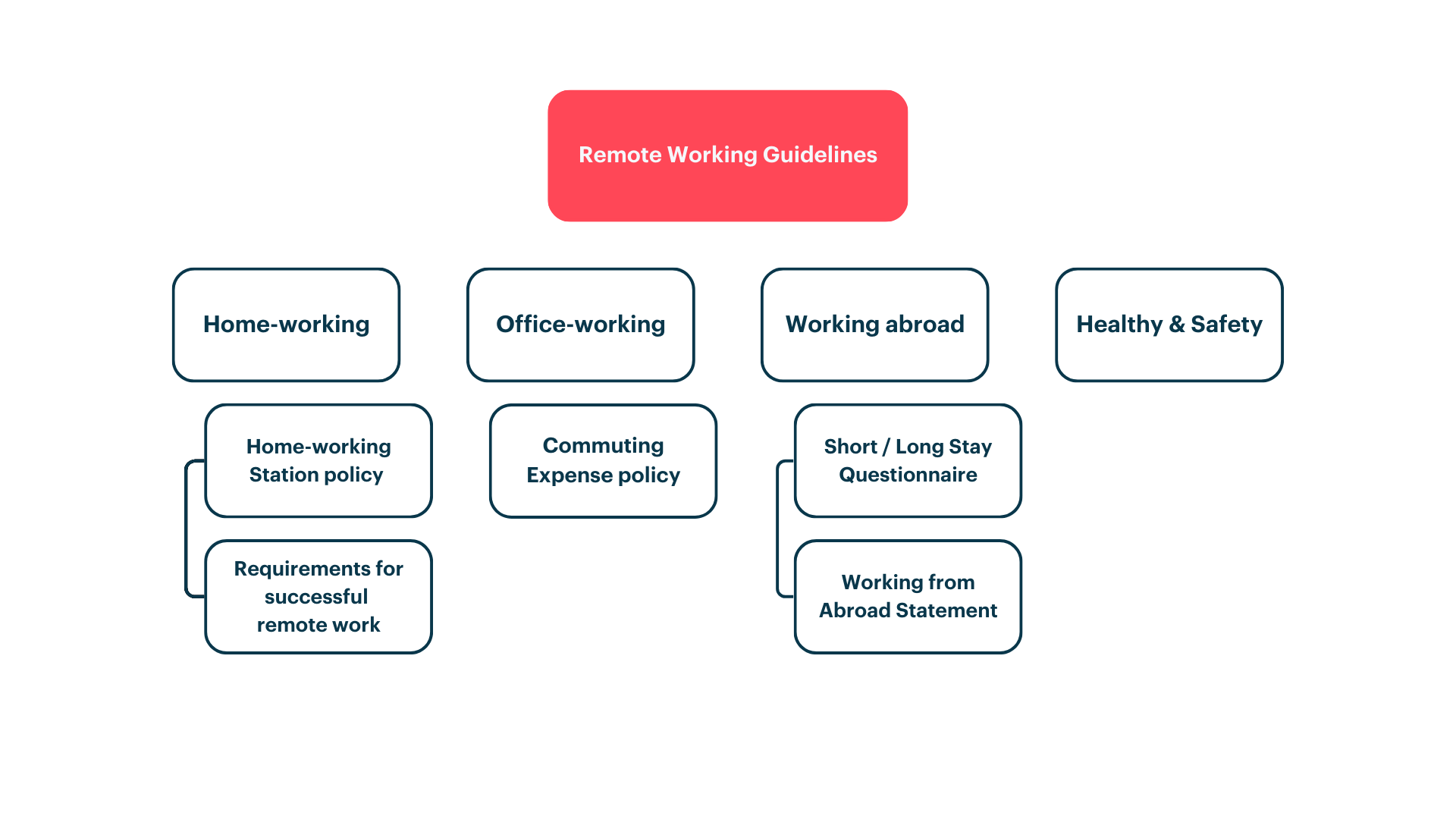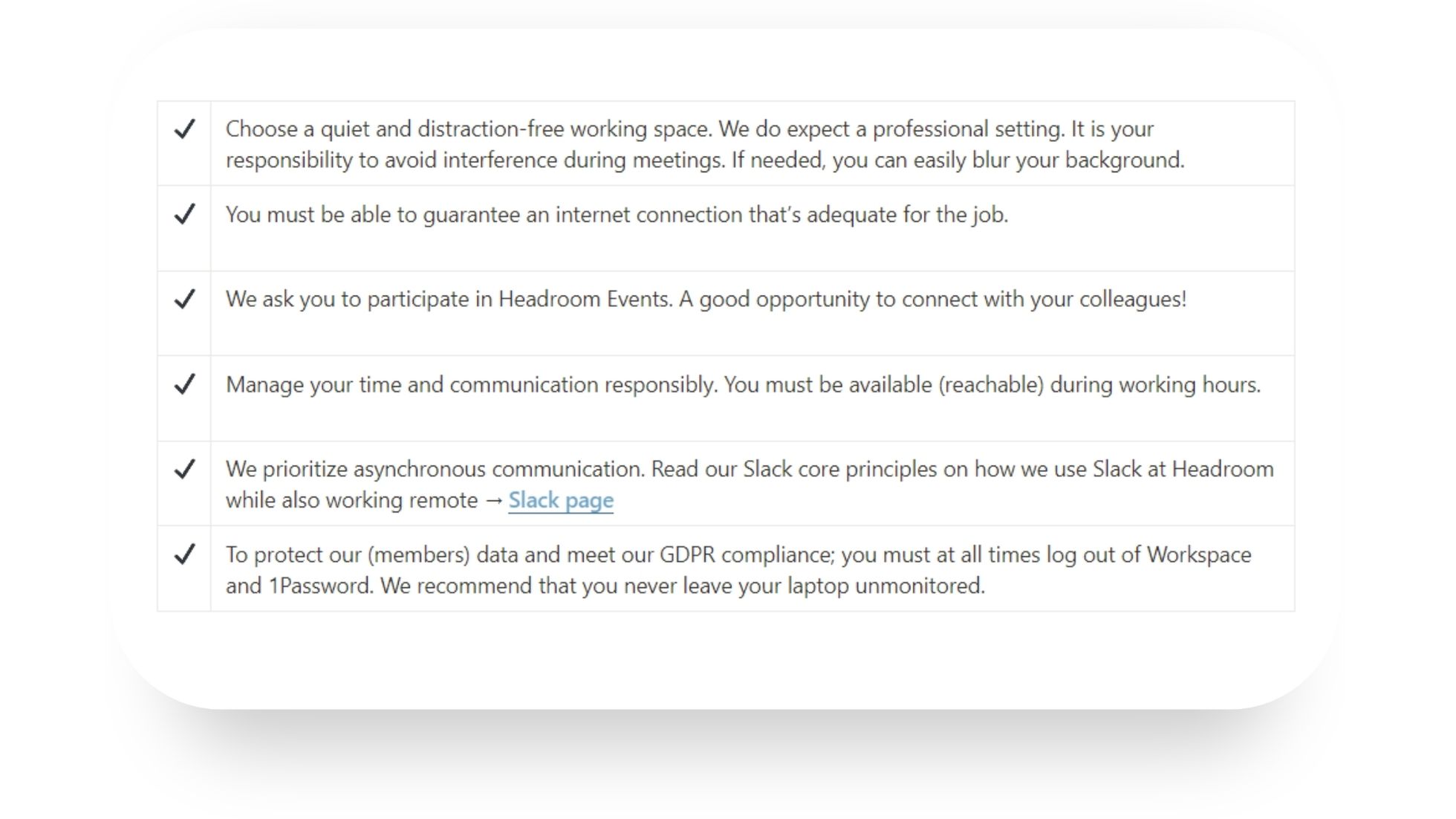Build a remote work framework that empowers and protects your team

Letting your employees work from home on day a week isn’t remote work.
And allowing your team to work from anywhere in the world without any support or safety check doesn’t make your company a remote champion.
Do you know what does?
Building a remote work system that makes your team feel supported and secure.
In a recent podcast conversation, Sonja Schiebold (Headroom Head of People) and Alessio Patierno (Headroom HR Manager) shared their wisdom on crafting a remote work framework at Headroom that strikes the right balance.
At Headroom, we’ve been remote-first since the beginning. But in the last year we have dived into remote working policies to structure remote work. The goal was to strike a balance between employee flexibility and legal compliance. This approach reflects our dedication to our core values in the face of evolving work dynamics.
1. Finding the Sweet Spot: Remote Flexibility Meets Compliance
In the past ten years of remote working, we’ve discovered that a successful remote work framework needs to balance two key things: flexibility and compliance. It means allowing your team the freedom to work in their preferred way while also following the necessary rules and regulations. To do this effectively, you need to provide clear guidelines and policies that offer structure without stifling creativity.

2. Keeping People at the Center
Our approach at Headroom Assistance centers around people – we are a service business after all! We understand that while remote work has its advantages, the well-being of your team should always come first. This means that the People team needs to evaluate remote-work requests case by case:
Where do they want to travel to?
- Is it deemed a safe country?
- What is the time zone? Does it allow for consistent work with the rest of the team?
- What about internet connection, accommodation and electricity?
- Is a Visa or working permit needed to legally work there?
Create clear criteria for remote work, and consider tools like questionnaires to empower and protect your employees.

3. Communication is Key
Clear and open communication is the cornerstone of our strategy. Understanding the emotional and cultural aspects of remote work is vital. As you develop your remote work framework, actively address concerns and ensure your team feels valued and heard. Maintaining your company culture should be a top priority, just as it is for us at Headroom Assistance.
4. Leading with Humanity
In conclusion, building a remote work framework that empowers and protects your team isn’t just about logistics; it’s about leading with humanity. By embracing flexibility, prioritizing communication, and putting your people first, you can create a remote work environment that fosters productivity, engagement, and well-being. At Headroom, we’re here to lead the way, and we encourage you to follow suit in crafting a remote work strategy that works for your team.
.
